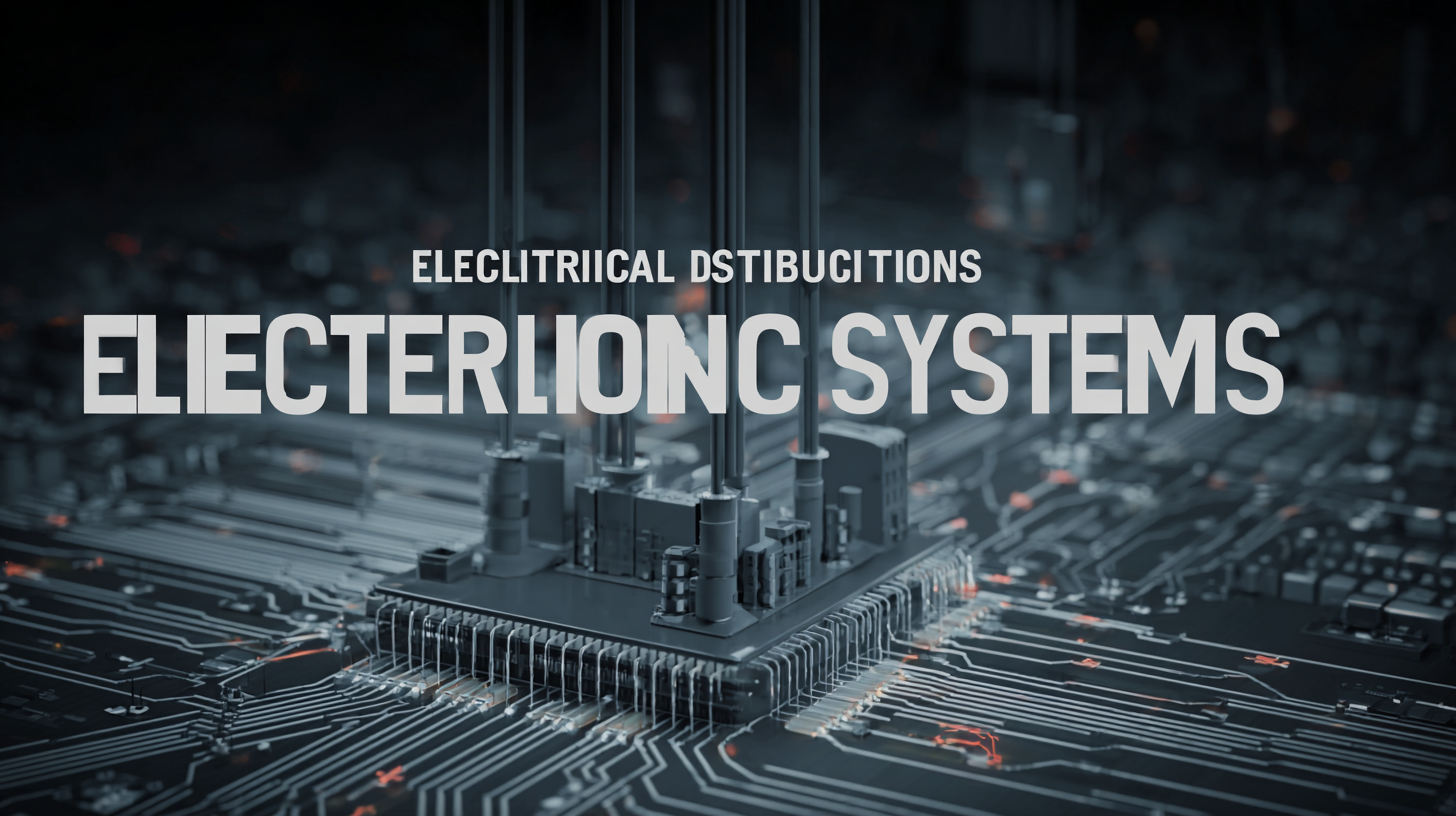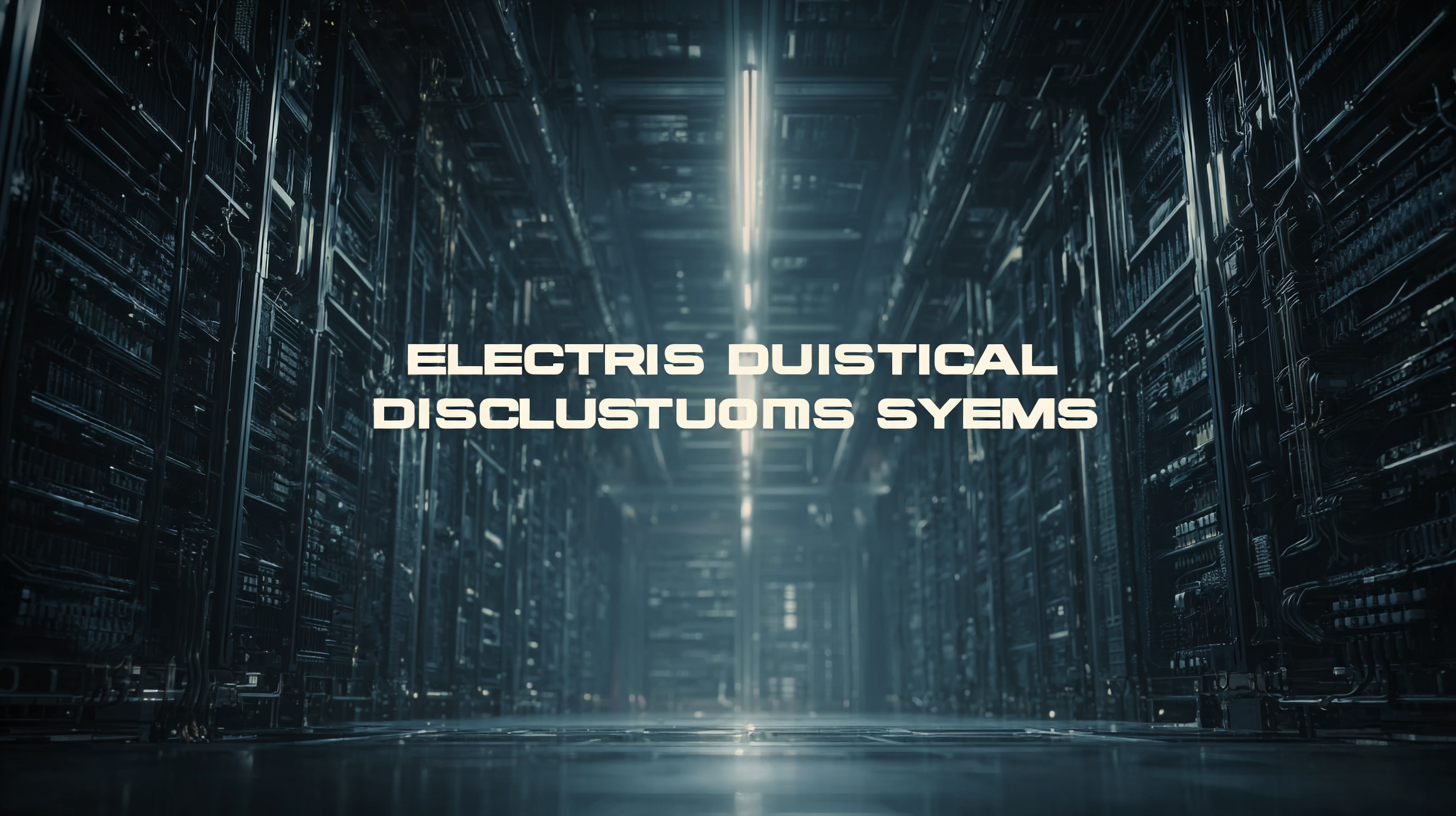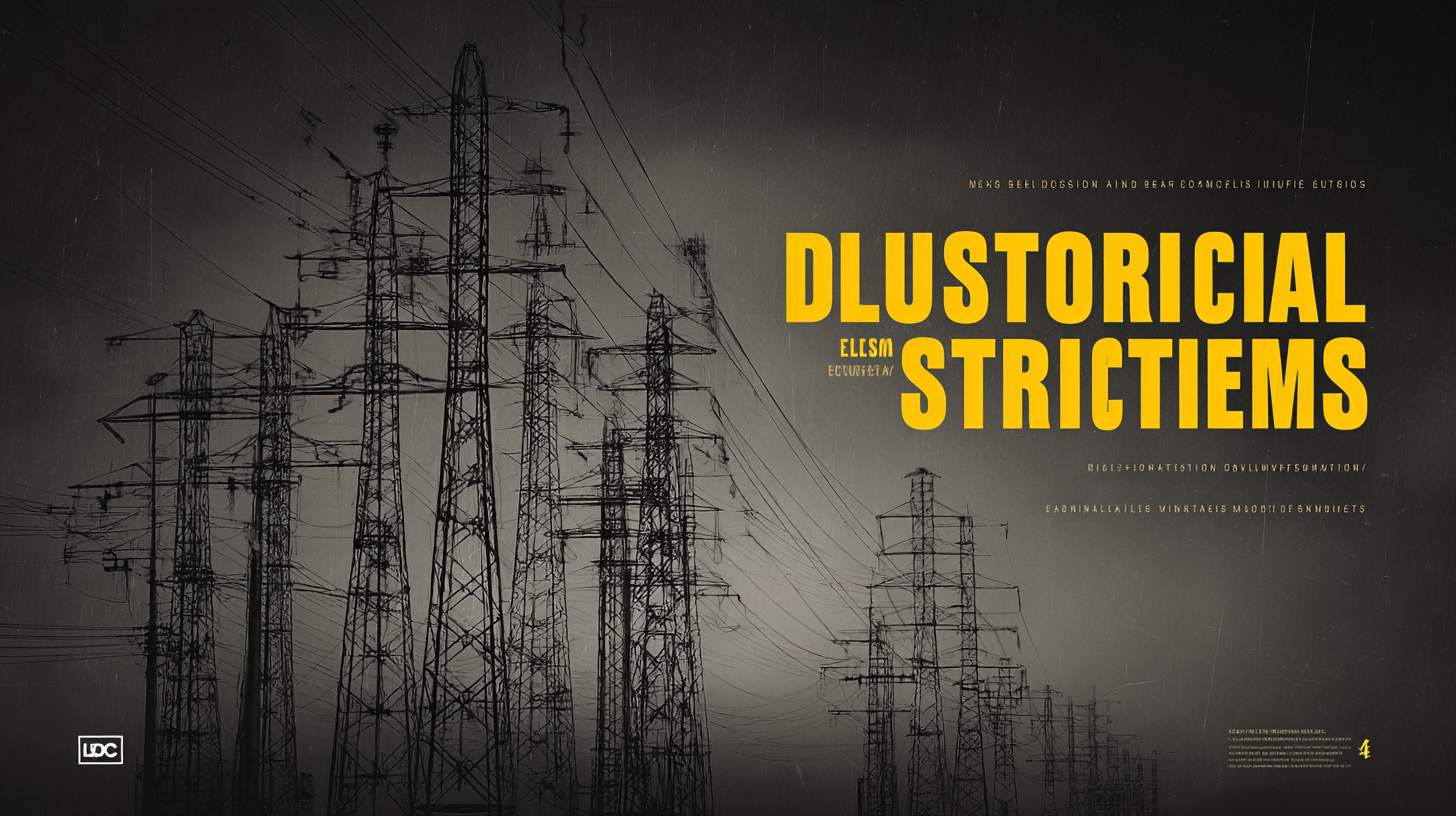
Innovations in Best Electrical Distribution Systems Shaping the Industry in 2025
As we look towards 2025, the landscape of Electrical Distribution Systems is poised for transformative innovations that will shape the industry's future. According to a recent report by the International Energy Agency (IEA), the demand for smarter and more efficient electrical distribution networks is projected to grow by 25% over the next few years, driven by the increasing integration of renewable energy sources and the rise of electric vehicles. Additionally, the Global Electrical Distribution Systems Market is expected to reach $200 billion by 2025, highlighting the critical role these systems play in energy management and sustainability. This blog will explore the top innovations in electrical distribution systems, emphasizing the integration of digital technologies such as IoT and AI, which are revolutionizing how electricity is distributed, monitored, and consumed, ultimately paving the way for a more resilient and efficient energy future.

The Importance of Selecting High-Quality Electrical Distribution Manufacturers
In the rapidly evolving energy landscape, the selection of high-quality electrical distribution manufacturers becomes paramount. As the world grapples with climate challenges and the increasing complexities of energy demands, businesses must partner with manufacturers that prioritize innovation and reliability. The integration of distributed energy sources and the push for smarter grid solutions underline the necessity for systems that can manage variable loads effectively.
The recent surge in energy digitization, paired with the demands for enhanced power management, highlights the strategic importance of choosing manufacturers who are at the forefront of technological advancements. Events such as major electrical exhibitions are showcasing cutting-edge solutions and initiatives aimed at optimizing energy distribution. As we approach 2025, the commitment to high-quality manufacturing will not only facilitate compliance with stringent environmental regulations but also enable a more resilient and efficient energy ecosystem. The effects of these selections are likely to resonate through various sectors, ultimately enhancing the stability and sustainability of the electricity supply chain.
Innovations in Best Electrical Distribution Systems Shaping the Industry in 2025
| Dimension | 2023 Data | 2025 Projection |
|---|---|---|
| Smart Meter Adoption (%) | 30% | 60% |
| Renewable Energy Integration (%) | 20% | 50% |
| Grid Stability Index | 75 | 85 |
| Investment in Infrastructure (Billion $) | 15 | 25 |
| Customer Satisfaction Score | 70% | 85% |
Key Innovations Transforming Electrical Distribution Systems by 2025
The landscape of electrical distribution systems is evolving rapidly, with several key innovations set to transform the industry by 2025. One of the most pivotal advancements is the integration of smart grid technology. This enables real-time monitoring and management of the electrical grid, allowing for enhanced reliability and efficiency. Utilities can optimize energy distribution, reduce outages, and integrate renewable energy sources more seamlessly into the grid, supporting a more sustainable energy ecosystem.
Another significant transformation comes from the deployment of advanced energy storage solutions. As the demand for electricity grows and renewable energy sources continue to gain traction, the need for effective energy storage becomes paramount. Innovations in battery technology and energy management systems will allow for better energy load balancing and reduced reliance on fossil fuels. These developments will empower consumers with greater control over their energy usage, enabling them to participate actively in energy conservation efforts, thereby reshaping the market dynamics of the electrical distribution sector.

Evaluating Manufacturer Credentials: What to Look For
When evaluating manufacturers for electrical distribution systems, understanding their credentials is essential for ensuring quality and reliability. Begin by examining their industry certifications and compliance with international standards. A reputable manufacturer should hold relevant certifications such as ISO 9001 for quality management systems or IEC standards that govern product safety and performance. These credentials not only reflect the manufacturer's commitment to quality but also ensure that their products meet stringent regulatory requirements.
Next, consider the manufacturer's track record in the industry. Look for a portfolio of successful projects and satisfied clients. Testimonials and case studies can provide insights into the manufacturer's expertise and reliability. Additionally, it is beneficial to assess the manufacturer's innovation capabilities—how they adapt to technological advancements and integrate smart solutions into their systems. Companies that invest in research and development are more likely to lead the way in innovative electrical distribution systems, positioning themselves as industry leaders by 2025.
Innovations in Best Electrical Distribution Systems Shaping the Industry in 2025
This chart illustrates the projected improvements in key innovations within electrical distribution systems by 2025. The focus is on technology areas that are expected to see significant advancements.
Emerging Solutions for Enhanced Efficiency in Electrical Distribution
As the electrical distribution industry pushes towards greater advancements, emerging solutions are poised to enhance efficiency significantly by 2025. One of the most promising trends is the integration of smart grid technologies, which utilize real-time data analytics to optimize energy distribution. By employing sensors and IoT devices, utilities can monitor energy flow and detect issues proactively, reducing downtime and improving reliability. This level of responsiveness is crucial for minimizing waste and ensuring effective energy management across urban and rural settings.
Another innovative approach shaping the future of electrical distribution is the adoption of decentralized energy resources. With the rise of rooftop solar panels and battery storage systems, consumers are becoming active participants in the energy market. This shift not only empowers users but also eases the burden on traditional grids. Microgrids can operate independently, providing localized solutions that enhance resilience during power outages. As these technologies continue to evolve, we can expect them to play a central role in creating a more sustainable and efficient energy landscape.
Trends in Sustainable Practices for Electrical Manufacturers in 2025
In 2025, the electrical manufacturing industry is witnessing a transformative shift towards sustainable practices. As per the International Energy Agency, the demand for sustainable energy solutions is projected to increase by 40% over the next decade. Leading producers are now prioritizing eco-friendly materials and energy-efficient processes. For instance, the utilization of recyclable materials in electrical components has surged, with reports indicating a rise of 30% in the use of recycled metals and plastics. This not only reduces waste but also lowers production costs significantly.

Tips for manufacturers looking to adopt sustainable practices include investing in renewable energy sources to power operations. Solar and wind energy not only reduce carbon footprints but can also lead to substantial savings in energy costs. Additionally, implementing smart grid technologies allows for better energy distribution and management, further enhancing sustainability.
Moreover, companies are encouraged to collaborate with suppliers who share a commitment to sustainable practices. A recent study highlighted that organizations engaged in sustainable supply chain management saw an increase in customer loyalty by over 20%. By aligning business practices with eco-friendly standards, manufacturers not only contribute to environmental goals but also enhance their competitive edge in a rapidly evolving market.